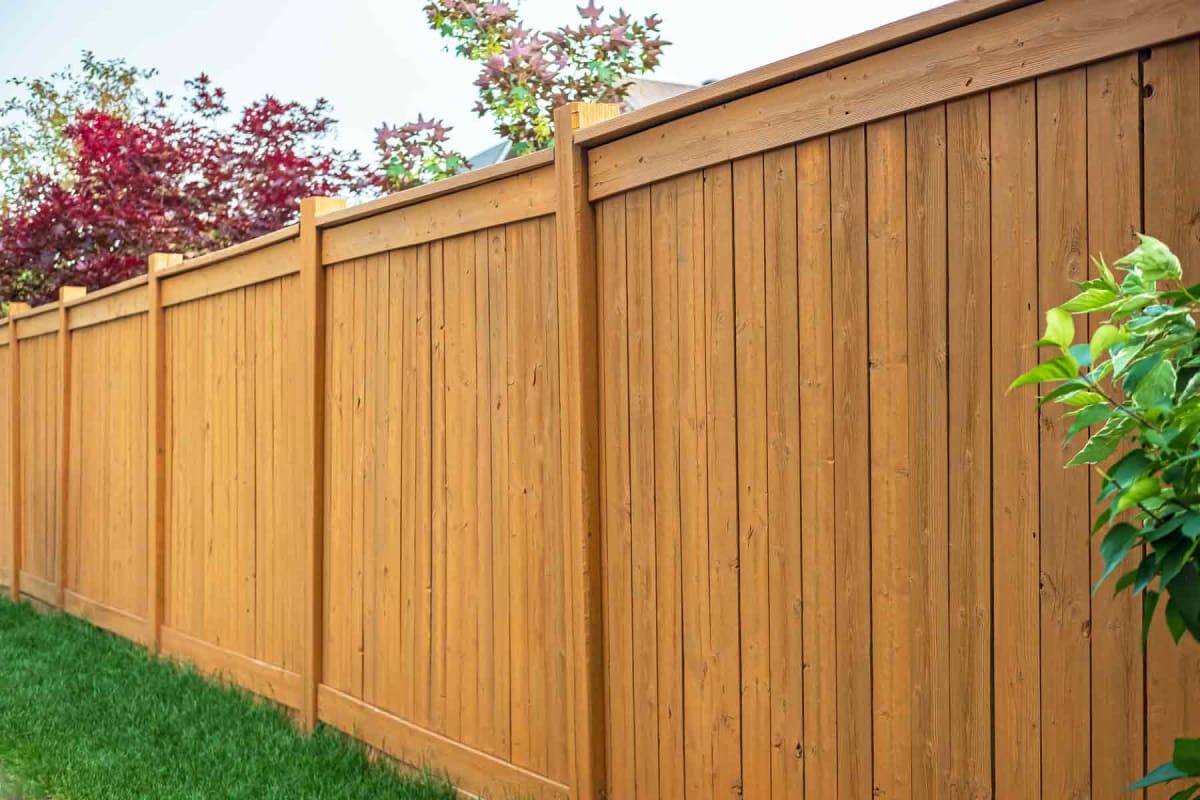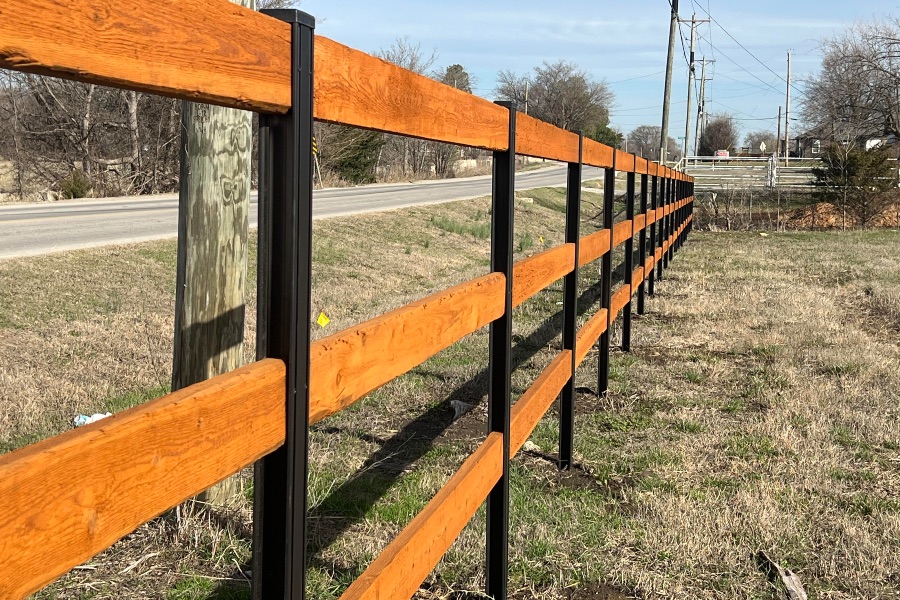All Categories
Featured
Selecting the excellent secure fencing product for your residential property can be a challenging job with the variety of alternatives readily available. Whether you're aiming to raise safety and security, improve privacy, or enhance the visual appeal of your home or service, the right fencing can offer several objectives. In this overview, we'll check out various fence materials, their advantages, and which options might be ideal fit for different needs.
Benefits:
Natural Feel And Look: Timber uses a warm, all-natural aesthetic that matches yards, grass, and various other outside areas. Customizable: You can repaint or tarnish timber fencings in any type of color, enabling limitless design opportunities. Privacy and Safety and security: When constructed as a solid panel, a timber fence can give exceptional privacy and security. Drawbacks:
Upkeep Required: Wood fences require periodic maintenance to stop rot, bending, and damages from parasites like termites. At risk to Weather: Exposure to rain, sunlight, and snow can weaken the quality of the timber with time, which suggests you may need to reseal or change boards. Best For: House owners trying to find a standard, personalized fencing with an all-natural look.
Advantages:
Lasting and durable: Vinyl is unsusceptible to the weathering that wood fencings experience, and it won't warp, split, or fade. Reduced Maintenance: Unlike timber, vinyl does not need discoloration or securing. Cleaning it is as basic as cleaning it with water. Range of Styles: Plastic fence is readily available in numerous styles and colors, and some variations also simulate the appearance of timber. Disadvantages:
Higher Initial Expense: Plastic fences can be more pricey to set up compared to various other products, such as wood or chain link. Prone to Fracturing: While durable, plastic can come to be brittle and split in very chilly temperatures or when struck with force. Minimal Modification: Unlike wood, plastic can not be quickly changed, so your layout choices are more restricted. Best For: Home owners that focus on low maintenance and long-term toughness, and who agree to invest in a higher initial price.
Benefits:
Inexpensive: One of one of the most affordable fencing choices, making it optimal for large buildings or areas calling for extensive coverage. Low Maintenance: Chain link fences need little to no upkeep beyond periodic cleansing and fixings. Resilient and Secure: While not aesthetically appealing, wire mesh fence are strong, hard to climb, and offer a high degree of safety and security. Negative Aspects:
![]()
Absence of Personal privacy: A wire mesh fence doesn't use much personal privacy unless you include slats or various other alterations. Industrial Look: The cord mesh might not enhance all property kinds, specifically household homes or locations calling for a visual touch. Best For: Large residential properties or locations where budget is a priority, or for those that require a solid, safe and secure limit without the need for personal privacy.
Benefits:
Strong and Secure: Metal fencings offer outstanding safety, as they are difficult to climb and give a robust barrier versus intruders. Long Life-span: Steel fencings can last for years, specifically when dealt with for corrosion and corrosion resistance. Stylish Aesthetic: Wrought iron and steel fencings include a stylish, traditional want to homes, yards, or commercial residential properties. Drawbacks:
Costly: Metal fencings, particularly functioned iron, tend to have a higher ahead of time cost than various other materials. Upkeep Needs: Steel and wrought iron fences may corrosion gradually if not appropriately kept, needing periodic paint or treatment. Limited Privacy: Steel fencings are normally open, so they do not provide the privacy that solid fencings like wood or vinyl can supply unless incorporated with other materials. Best For: Those looking for a high-security, decorative option with a lengthy life expectancy, particularly for high-traffic or upscale areas.
Benefits:
![]()
Low Upkeep: Compound secure fencing requires no paint, discoloration, or securing. It's very easy to clean with simply soap and water. Durability: Resistant to rot, pests, and weather condition, composite fences last longer than standard timber. Eco-Friendly: Many composite products are made from recycled wood and plastic, reducing environmental influence. Downsides:
Pricey: The preliminary cost of composite fencing can be greater than timber or plastic. Minimal Customization: While offered in various colors, composite fences don't use as numerous design selections as wood. Heavy: Compound products are typically larger than various other sorts of fencing, which can make setup more hard. Best For: Those who want a low-maintenance, green alternative that combines the appearance of wood with enhanced durability.
Final thought. Choosing the ideal secure fencing product for your residential or commercial property depends on a variety of aspects, including your spending plan, visual choices, personal privacy needs, and maintenance desire. Whether you go with the timeless charm of timber, the low-maintenance benefits of vinyl, the stamina of steel, or the eco-friendly resilience of composite, picking the most effective fencing needs mindful consideration of your building's unique needs. By understanding the benefits and limitations of each material, you can make an educated decision that offers long-term value and contentment for your building.
- Wood Secure fencing. Wood fencing is a traditional selection for lots of property owners as a result of its natural elegance, versatility, and capability to mix perfectly with different building designs. Available in a range of styles, including personal privacy, picket, and ranch rails, wood can be customized with paint or discolor to match your preferred visual.
Benefits:
Natural Feel And Look: Timber uses a warm, all-natural aesthetic that matches yards, grass, and various other outside areas. Customizable: You can repaint or tarnish timber fencings in any type of color, enabling limitless design opportunities. Privacy and Safety and security: When constructed as a solid panel, a timber fence can give exceptional privacy and security. Drawbacks:
Upkeep Required: Wood fences require periodic maintenance to stop rot, bending, and damages from parasites like termites. At risk to Weather: Exposure to rain, sunlight, and snow can weaken the quality of the timber with time, which suggests you may need to reseal or change boards. Best For: House owners trying to find a standard, personalized fencing with an all-natural look.
- Vinyl (PVC) Fence. Plastic fences have grown in appeal as a result of their low upkeep and sturdiness. Made from synthetic plastic products, vinyl fencings are resistant to rot, fading, and pests, using a clean, contemporary appearance with little upkeep.
Advantages:
Lasting and durable: Vinyl is unsusceptible to the weathering that wood fencings experience, and it won't warp, split, or fade. Reduced Maintenance: Unlike timber, vinyl does not need discoloration or securing. Cleaning it is as basic as cleaning it with water. Range of Styles: Plastic fence is readily available in numerous styles and colors, and some variations also simulate the appearance of timber. Disadvantages:
Higher Initial Expense: Plastic fences can be more pricey to set up compared to various other products, such as wood or chain link. Prone to Fracturing: While durable, plastic can come to be brittle and split in very chilly temperatures or when struck with force. Minimal Modification: Unlike wood, plastic can not be quickly changed, so your layout choices are more restricted. Best For: Home owners that focus on low maintenance and long-term toughness, and who agree to invest in a higher initial price.
- Chain Link Fence. Chain web link fences are a cost-efficient alternative for those trying to find safety and security without the high cost tag. Normally made use of in industrial residential properties, parks, and large houses, chain web link fencings give a reliable border and are offered in a range of heights.
Benefits:
Inexpensive: One of one of the most affordable fencing choices, making it optimal for large buildings or areas calling for extensive coverage. Low Maintenance: Chain link fences need little to no upkeep beyond periodic cleansing and fixings. Resilient and Secure: While not aesthetically appealing, wire mesh fence are strong, hard to climb, and offer a high degree of safety and security. Negative Aspects:

Absence of Personal privacy: A wire mesh fence doesn't use much personal privacy unless you include slats or various other alterations. Industrial Look: The cord mesh might not enhance all property kinds, specifically household homes or locations calling for a visual touch. Best For: Large residential properties or locations where budget is a priority, or for those that require a solid, safe and secure limit without the need for personal privacy.
- Metal Fencing (Aluminum, Steel, Wrought Iron) Steel fences, such as light weight aluminum, steel, and functioned iron, are preferred for their longevity, security, and stamina. These products are frequently used in high-security business buildings, upscale domestic locations, and those looking for an advanced, decorative look.
Benefits:
Strong and Secure: Metal fencings offer outstanding safety, as they are difficult to climb and give a robust barrier versus intruders. Long Life-span: Steel fencings can last for years, specifically when dealt with for corrosion and corrosion resistance. Stylish Aesthetic: Wrought iron and steel fencings include a stylish, traditional want to homes, yards, or commercial residential properties. Drawbacks:
Costly: Metal fencings, particularly functioned iron, tend to have a higher ahead of time cost than various other materials. Upkeep Needs: Steel and wrought iron fences may corrosion gradually if not appropriately kept, needing periodic paint or treatment. Limited Privacy: Steel fencings are normally open, so they do not provide the privacy that solid fencings like wood or vinyl can supply unless incorporated with other materials. Best For: Those looking for a high-security, decorative option with a lengthy life expectancy, particularly for high-traffic or upscale areas.
- Compound Secure fencing. Composite fencing incorporates timber fibers and plastic to develop a material that mimics the appearance of wood however is more durable and easier to maintain. It's a green option made from recycled materials, making it both lasting and practical.
Benefits:

Low Upkeep: Compound secure fencing requires no paint, discoloration, or securing. It's very easy to clean with simply soap and water. Durability: Resistant to rot, pests, and weather condition, composite fences last longer than standard timber. Eco-Friendly: Many composite products are made from recycled wood and plastic, reducing environmental influence. Downsides:
Pricey: The preliminary cost of composite fencing can be greater than timber or plastic. Minimal Customization: While offered in various colors, composite fences don't use as numerous design selections as wood. Heavy: Compound products are typically larger than various other sorts of fencing, which can make setup more hard. Best For: Those who want a low-maintenance, green alternative that combines the appearance of wood with enhanced durability.
Final thought. Choosing the ideal secure fencing product for your residential or commercial property depends on a variety of aspects, including your spending plan, visual choices, personal privacy needs, and maintenance desire. Whether you go with the timeless charm of timber, the low-maintenance benefits of vinyl, the stamina of steel, or the eco-friendly resilience of composite, picking the most effective fencing needs mindful consideration of your building's unique needs. By understanding the benefits and limitations of each material, you can make an educated decision that offers long-term value and contentment for your building.
Latest Posts
Join WyHy FCU – Top Benefits for Your Future
Published May 26, 25
1 min read
How Chicago Drivers Pick Montclare Auto Repair for Trusted Service and Great Savings
Published May 22, 25
1 min read
Discover Special Auto Repair Specials in Chicago at Montclare Auto Repair
Published May 21, 25
1 min read
More
Latest Posts
Join WyHy FCU – Top Benefits for Your Future
Published May 26, 25
1 min read
How Chicago Drivers Pick Montclare Auto Repair for Trusted Service and Great Savings
Published May 22, 25
1 min read
Discover Special Auto Repair Specials in Chicago at Montclare Auto Repair
Published May 21, 25
1 min read